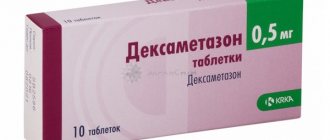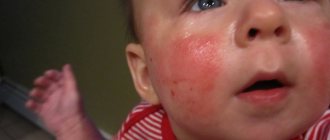Outline of the article: 1. The reason for the redness of the Diaskintest 2. What to do if the Diaskintest itches The Diaskintest test (a type of tuberculin test) is a new development in the field of early diagnosis of tuberculosis.
The effect of this type of test is based on a local allergic skin reaction, which shows that there is a tuberculosis pathogen in the body. The usual Mantoux tuberculin test contains almost entire killed tuberculosis bacteria, and Diaskintest contains only antigens of the immune system to the active form of Koch's bacillus. Therefore, mantu reacts to any tuberculosis bacteria in human blood, no matter whether they cause harm or not, and Diaskintest reacts only to Koch’s bacillus in its active form.
The reaction is the recognition of the introduced substances as pathogenic, and the response of the body.
Can you be allergic to Diaskintest?
An allergic reaction to Diaskintest is much less common than when checking for the presence of a disease with the Mantoux test. This can be explained by the origin of the protein in the allergy test - the synthetic component is accepted by the body much better. However, even when using Diaskintest, unwanted reactions may occur.
Causes
A child’s allergy to Diaskintest is due to the artificial introduction of a provocateur into the body, with which the immune system begins to fight. Its signs are precisely symptoms of allergies. A reaction may occur:
- due to individual intolerance to any component of Diaskintest;
- if the rules for caring for the injection site are violated;
- due to ignoring contraindications to the test.
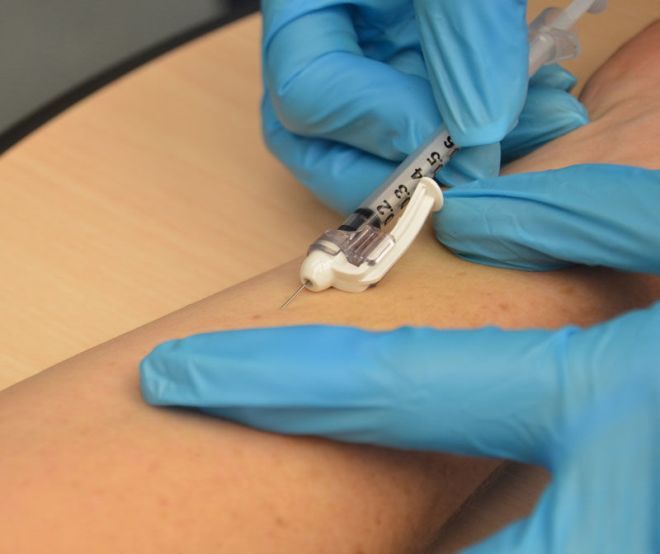
Individual intolerance to the components of the test will almost 100% lead to the development of inadequate reactions. Of the contraindications it is worth noting:
- any skin diseases, infections, viral diseases in the patient;
- chronic diseases in the acute stage;
- disorders of the gastrointestinal tract;
- neurological diseases, including epilepsy;
- recent vaccination against other diseases.
In the post-cold period, Diaskintest in children is carried out no earlier than a month after all symptoms disappear. The active substance cannot be administered together with the Mantoux test, even if injections are performed into various parts of the body. As for vaccination, the possibility of combining routine vaccinations and Diaskintest is determined by a medical professional. The test should be administered with caution to patients suffering from any other forms of allergies.
The cause of side effects may be a parasitic infection of the body. When infected with parasites, immunity decreases, and this is the reason for the development of inadequate reactions. Local manifestations may occur if medical personnel do not comply with the rules for administering the injection or if the storage conditions of the drug are violated.
Conclusion
Can a child be allergic to Diaskintest? This question is relevant for modern parents. All people are prone to allergic reactions, adults are no exception. If there are predisposing factors (weak immunity, tendency to allergies), you should consult with an allergist before Diaskintest. It may be better to use some other alternative method for diagnosing tuberculosis.
An allergy can manifest itself not only as swelling in the injection area and skin rashes, but also with much more serious consequences, such as asphyxia and severely elevated body temperature. If any deviations from the norm occur, you should immediately consult a doctor.
How to prepare to avoid allergies
To prevent the development of signs of allergy, you should consult a doctor before injection. At the appointment, you should tell about all allergic reactions that have occurred previously. It is necessary to notify a medical professional about recent illnesses. Immunity weakened after illness will in most cases react to Diaskintest with undesirable reactions.
After the injection it is prohibited:
- independently treat the injection site with disinfectants and cosmetic creams;
- cover with a plaster or bandage the injection area, this prevents the access of fresh air;
- expose the injection site to mechanical stress, including avoiding rubbing with clothing.
Contrary to popular belief, taking water procedures is not prohibited. It is important not to rub the area where the drug is administered with a washcloth or sponge, and try to avoid contact with washing agents. The test result for tuberculosis is assessed 72 hours after the Diaskintest injection.
How does an allergy to a test manifest itself?
The first symptoms of an allergy to Diascantest may appear two to three hours after the procedure and develop throughout the day. General health worsens, drowsiness, weakness, and headaches appear. The primary signs of an allergic reaction are very similar to the symptoms of acute respiratory infections.
More severe allergy symptoms appear:
- itching, pain at the injection site;
- increased temperature;
- development of edema at the vaccination site;
- the appearance of a rash on certain parts of the body or over its entire area;
- disruption of the gastrointestinal tract, both constipation and diarrhea may occur;
- the appearance of a feeling of constant thirst;
- muscle spasms.
Increased attention is paid to the hyperergic reaction to Diaskintest. A hyperergic reaction can mean that there is a fact of tuberculosis, or it can be a sign of an allergy to the components of the drug. In this case, additional studies are prescribed in any other way, with the exception of using the Mantoux test.
A hyperergic reaction indicates the presence of a disease if a brown spot with clear contours forms at the injection site. Along with it there is an infiltrate, the diameter of which is more than 12 mm.
The norm for diagnosis using the Diaskintest method is only a negative reaction, when there are no skin manifestations or, if a papule has formed, its diameter does not exceed 2 mm. Doubtful (when there is hyperemia without the formation of a “button”) or positive (with an area of compaction of any size) reactions are not considered normal. A hyperergic reaction is an alarming signal that most likely indicates infection.
What can cause an allergic reaction?
Often this is a rash; it can appear not only in the place where the injection was given, but spread throughout the entire body and individual large areas of the body: buttocks, legs, groin area, face and neck.
The rash can be different in nature: it can be in the form of pimples, blisters, scales, which in turn cause a lot of inconvenience: itching, dry skin.
Headache, nausea, vomiting, general malaise, dizziness, and increased body temperature may occur.
If you discover an allergy on your body, then subsequent use of Diaskintest should be completely excluded. After establishing the fact of allergies or other formations and discovering a characteristic rash, you need to contact a specialist for qualified help.
The doctor will help eliminate allergy symptoms and prescribe treatment; it is also extremely necessary to find out the form of manifestation of tuberculosis; as a rule, this fact is purely individual, and it can manifest itself differently in everyone.
Allergies will also occur with repeated use of Diaskintest; it is not curable, but resembles drug intolerance in humans. Therefore, a full course of treatment is required, which consists of the following mandatory points.
A positive reaction to the Mantoux test is characterized by the appearance of an inflamed red tubercle larger than 2 mm. This does not mean that the person being examined absolutely definitely has tuberculosis. An inflamed papule after a mantoux reaction is a sign that the child’s immune system has become familiar with Koch’s bacillus. This can occur after vaccination and revaccination, when non-pathogenic strains of mycobacteria are in the body.
Diaskintest is a relatively new tool for detecting tuberculosis, so many are interested in the question of whether there may be allergies or side effects after the test, and whether it is dangerous to administer the drug to children. Like other tests, Diaskintest can cause atypical manifestations. This reaction of the body is explained by intolerance to one or more components of the vaccine. Allergy to Diaskintest in most cases manifests itself on the first day, within a few hours.
There are also a number of contraindications to the use of this diagnostic method.
Content
There are two ways to determine what an allergic reaction may be causing:
- Identify the problem yourself;
- Contact an allergist.
To determine the cause of a side effect yourself, you just need to carefully monitor how the body reacts to any product or drug.
It is best to consult an allergist. It will help you determine what exactly you are allergic to using various techniques and tests.
This is usually done through skin testing. In order for the procedure to be successful and show a true positive or negative result, it is necessary to stop using antihistamines before the procedure.
An allergy to Diaskintest can indeed manifest itself. This has been confirmed not only by doctors, but also by actual cases of allergies in patients. However, such a reaction in the body may not always be caused by the drug. Other factors may also influence this.
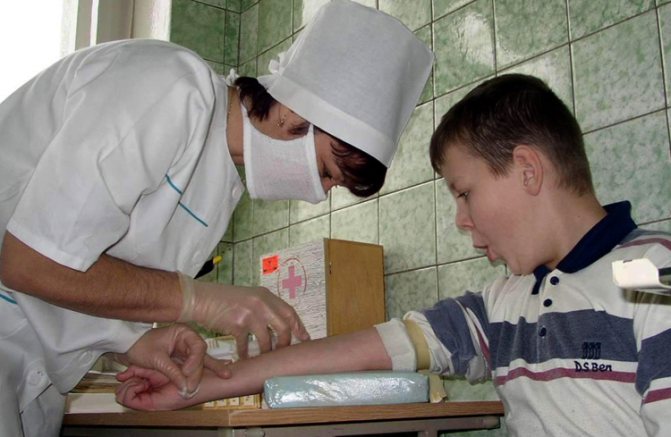
The development of an allergic reaction to Diaskin affects the test results. If two or more signs of allergy appear within 72 hours after the injection, the positive TB test should be considered invalid.
In this case, information about the presence of reactions to Diaskintest is entered into the patient’s card and other diagnostic methods are prescribed. Based on the results of an alternative study, the doctor can conclude that there is an infection in the body.
In fact, there really aren't that many reasons that cause an allergic reaction. Among them:
- The patient is intolerant to the allergen responsible for tuberculosis, as well as allergic to any of the components of the drug;
- Ignoring contraindications;
- Neglect of caring for the injection site.
To avoid an allergic reaction in the latter case, it is worth considering some rules.
- Do not scratch the injection site under any circumstances, despite the itching;
- Do not treat the injection site with brilliant green, iodine or other medicinal solutions - this can only cause harm;
- Do not cover the injection site with tissue, gauze, tape or similar materials. It is necessary for the skin to breathe. Otherwise, the drug may show a false result.
The disadvantage of Diaskintest is the presence of false negative reactions, when there is a slight infection, but there is no reaction to it, which can be caused by improper functioning of the immune system or its weakness for various reasons, including due to other present diseases or inflammations.
Diaskintest and allergies are closely related, since its positive reaction is a slight local allergy to the injected drug. But can there be a general allergy to Diaskintest? Of course, it can, since there are known cases of allergic reactions in people to a variety of substances, even to air or light.
First of all, when performing a diaskintest, there is a normal reaction in the form of an increase in temperature, which is easily explained by the body’s natural protective reaction to the appearance in the blood of antigens to the pathogen, which can be released naturally only during infection. Headaches with slight malaise after vaccination, which is of the same nature as fever, are also considered normal.
There is also a local allergy to Diaskintest in the form of a very large papule and redness. This is because the injected proteins are allergens and should cause a slight local allergic reaction if the result is positive, however, hypersensitivity of the immune system can cause a similar phenomenon. It is very important not to mistake a positive result for an allergy, much less refuse treatment.
There is also a general allergic reaction to Diaskintest, caused by foreign proteins and enhanced by the presence of contraindications:
- Immune system disorders.
- Skin and infectious diseases.
- Acute period of somatic diseases.
- Epilepsy.
- Exacerbation of allergies.
- Allergy to the drug.
- Tuberculosis epidemic.
- Some other diseases: pancreatitis, hepatitis, colitis, etc.
Is an allergy to Diaskintest serious? A truly serious allergy to Diaskintest is extremely, extremely rare, and minor variations in its manifestation may depend on the condition of the subject or the composition of a particular vaccine, and quite often are not a contraindication to its administration.
An allergy to Diaskintest itself is a contraindication to its use. Although this type of diagnosis can only react to the presence of tuberculosis, various red spots or blisters at the injection site can be confusing or similar to a positive result, and therefore a different diagnostic method should be chosen.
Is it possible to do Diaskintest if you have allergies?
The purpose of testing for tuberculosis is to assess the skin reaction to the causative agent of the disease. If an allergy occurs during the administration of Diaskintest, it is impossible to unambiguously determine the cause of local inflammation.
In case of minor previous reactions, the doctor may allow the administration of Diaskin with the condition of preliminary preparation of allergy sufferers. A week before the injection, a course of vitamins and antihistamines is prescribed, which help minimize unwanted manifestations. The patient should first undergo tests to assess his general condition.
Is it possible to do Diaskintest for children with allergies?
In children, undesirable reactions to the administration of Diaskintest and the Mantoux test develop much more strongly than in adults. Due to acute manifestations, any allergy in a child, regardless of its etymology, is a reason for referral to diagnostics. Diaskintest is replaced by any other method for determining the disease.
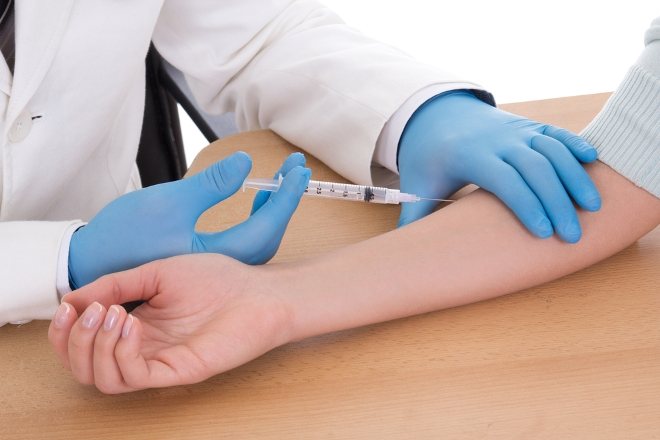
Possible complications
Any medication can cause side effects (which are usually reported in the manufacturer's instructions). This statement also applies to Diaskin. The causes of negative consequences are divided into two groups:
- internal - the body’s natural reaction to the introduction of a foreign agent;
- external – violation of the injection technique, rules for caring for the papule, and the like.
Often a bruise or bump appears at the injection site that is not related to a reaction to the drug. They are caused by small amounts of air getting under the skin. Such formation must be monitored in order to prevent the development of complications in time. It usually goes away within a couple of days without any intervention.
In addition to side effects in the form of redness, headaches and other mild symptoms, Diaskintest can cause the patient to develop more serious complications. These include:
- sleep disorders;
- Quincke's edema;
- dizziness;
- suffocation and muscle spasms.

As a rule, such serious consequences develop almost instantly. If these symptoms occur, self-medication is unacceptable and you should seek medical help. Otherwise, irreparable harm may be caused to human health. Some of the complications, for example, Quincke's edema, without timely medical attention lead to death.
To avoid a threat to the health and life of the patient from suffocation or angioedema, the first thirty minutes after the injection should be in a medical facility.
Do I need to take measures to relieve allergies?
A child suspected of having tuberculosis and members of his family should be examined by a phthisiatrician. To make a diagnosis, the doctor sends patients to:
- fluorography;
- clinical blood test (to identify the inflammatory process);
- sputum culture (to detect Koch's bacillus).
If diagnostic measures do not confirm the presence of infection, the Mantoux result is considered false positive.
If a red spot has formed around the papule, this may be both a symptom of infection and a variant of a normal reaction. In this case, an examination by a phthisiatrician is required. Your doctor may prescribe preventive therapy.
Redness of the skin around the papule is the result of mechanical impact on the wound due to negligence.
Try not to use Diaskintest if you have a weak immune system, as this will worsen your existing predisposition to allergies. Before the test, you should visit a doctor; in some cases, you first strengthen your immune system; this will help you: hardening, maintaining a healthy lifestyle, adjusting your diet, taking an immunomodulator prescribed by your doctor. Never take them on your own without the advice of a doctor.
With a weakened immune system, the reaction occurs quickly, is extensive and severe.
If the situation cannot be corrected in a short time, then the use of Diaskintest is excluded. It is necessary to find alternative and more gentle means for detecting tuberculosis.
If an allergy occurs in a child, you should stop using the test, visit a doctor, and use the treatment method described above (medicines, drops, proper nutrition, healthy sleep and rest).
If you have a slight allergic reaction either to the drug itself or to any other substances, you should not take antihistamines, since the work of Diaskintest is based on a local allergic reaction indicating the presence of a pathogen. If you take an anti-allergenic drug, then the main factor of the study is that the human immune system will be suppressed and will not give the proper reaction, and, consequently, the patient will receive a false negative result, which is the only weakness of Diaskintest.
If a not too acute general allergic reaction to Diaskintest or another factor occurs, then it is necessary to take conventional antihistamines such as claretin, duphaston, Tavegil, Suprastin and any others prescribed by the doctor or that are the patient’s preference.
If the temperature jumps above 39 degrees inclusive, there is a feeling of difficulty breathing, swelling, a severe rash or a massive acute allergic reaction, it is necessary to urgently call an ambulance.
Usually, an allergy to Diaskintest is not associated with allergies to other substances, but if the subject is prone to very acute manifestations of them and does not know for sure whether he has a reaction or not, then testing must be carried out exclusively in a hospital or, better yet, a hospital.
An allergy to Diaskintest is extremely rare, and is also not a reason to ignore its results. If this test gives a positive answer for allergies, then an examination by a phthisiatrician is necessary with other additional diagnostic methods. Very often, an allergy, in general, does not in any way affect the result in the “yes” or “no” aisle, but can affect the classification of a positive result: doubtful, moderate, strong or extremely strong.
Many people, and worse yet, parents, do not take the results of Mantoux or Diaskintest seriously, especially if there was an allergic reaction, or even believe that a positive result is an allergy. This is deeply erroneous behavior that can cost the health or even the life of an adult, not to mention a child and several hours saved on additional examination, and even more so, refusal of treatment can end in failure.
Diaskintest reacts even to a recent infection with the presence of a very small amount of the pathogen in the body, which is difficult to see in other ways, but which, without proper attention, can grow into a severe form of tuberculosis either very quickly or within a couple of years. In addition, there were cases when a person was already suffering from a very severe form of tuberculosis and did not know about it until the last moment.
Alternative Methods
In addition to the Mantoux and Diaskintest tests, there are other methods for determining tuberculosis:
- fluorography. Suitable for adults, since irradiation of a child’s body can lead to undesirable consequences. In our country, fluorography is allowed from the age of 15;
- X-ray. This method is also based on illuminating the patient’s lungs with X-rays. It is used both separately from fluorography and as an addition to it. Approved for use in children over three years of age strictly according to indications;
- sputum examination. Biological material is collected from patients and the presence of tubercle bacilli in it is determined in the laboratory;
- blood analysis. Blood is taken from a vein; before collection, you should stop eating and smoking.
The attending physician will help determine the most appropriate alternative method after collecting the patient's medical history.
